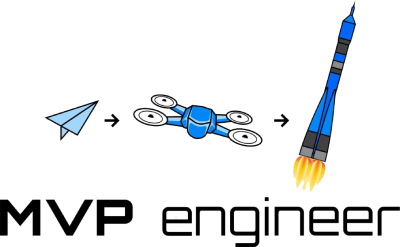As an entrepreneur, you're blazing a new path. This is definitional. If it's been done before, you wouldn't be needed. You have the responsibility to curate your influences and the things you want to effect your actions. Where should you seek advice? This is what I'd like to explore in this article.
Limitations of Unit Tests
Some developers are dogmatic using test driven development (TDD) philosophy. For MVPs, I think this is the wrong approach. Here I lay out some considerations for a solid development culture while you build your business. I will specifically focus on unit tests, tests that validate atomic components of an app.
MVPs for Crypto and Bitcoin
Crypto is a huge topic, and this format is too short to share comprehensive thoughts, but I want to dive into crypto MVPs, integrity, and the gap between the promise of crypto and its current reality.
Artificial Intelligence as a Perfect Solution
Artificial Intelligence will solve our problem. Lot's of entrepreneurs have a grand vision of how AI can solve any difficult problem for their business. This doesn't mean they're wrong, but the fields of AI and ML (machine learning) have many sub categories and areas of active research that allow us to make progress on quite specific computational tasks. Applying the wrong form of learning or problem solving to a task can produce underwhelming results. Tweaking and tuning a model or method is the way to get solid results and outpace your competitors in business use cases. I'd like to go through a few ML methods and what they're used for maybe to inspire some new ideas.
Web Automation Tools for New Business Use Cases
There are web automation tools that help with website acceptance testing, and user flow testing like selenium. There is an underutilized area of development that can leverage these technologies that abuses their power. The intended use case is to open a website that I own and test functionality that I programed into the website to ensure it's working correctly. However, this tool, and many like it can crawl and interact with any website, and you can inject python (or other language) logic in the middle of actions taken on your behalf on the website. I want to explore a tool I created to utilize this, and brainstorm some other uses that might create new business use cases.
Applying Old ML to Novel Businesses
Artificial intelligence and machine learning are disciplines that cover many methods and systems. There are a ton of powerful tools and libraries that have been built by technologists that are ripe for application to business tasks. There are places where these novel methods can be applied in profitable sectors.
Building an MVP to Raise Funds from Angels and VC
A common use case to build an essentialist MVP is to get more support for your idea. Taking the functional demo and pitching it to an investor, so you get more funds to flesh it out further, and recruit more team members to mentor, give resources, ideas, and connections to the project. Here I'm going to discuss some considerations around building an MVP for this purpose.
Molding Your MVP To Solve the Cold Start Problem
When facebook pulled together a simple app for dating, it was immediately valuable. This is the power of network effects. Not the most popular dating app in the world, but a viable, useful, and profitable tool. When you launch your dating app, while more innovative, it suffers from the cold start problem. You have zero users, so who am I going to match with? There are two main solutions to the cold start problem, and your MVP must keep these in mind while building to be successful.
How to Budget for your Minimum Viable Product
There are a number of ways to build your MVP, and each might have a different pricing structure. But here I try to lay out some rules of thumb on how to get budget ballparks for certain features.
My Why: Technology Essentialism
The year is 1996. My third grade teacher has five brand new Dell computers and is teaching the advanced math students Logo, an education programming language...











